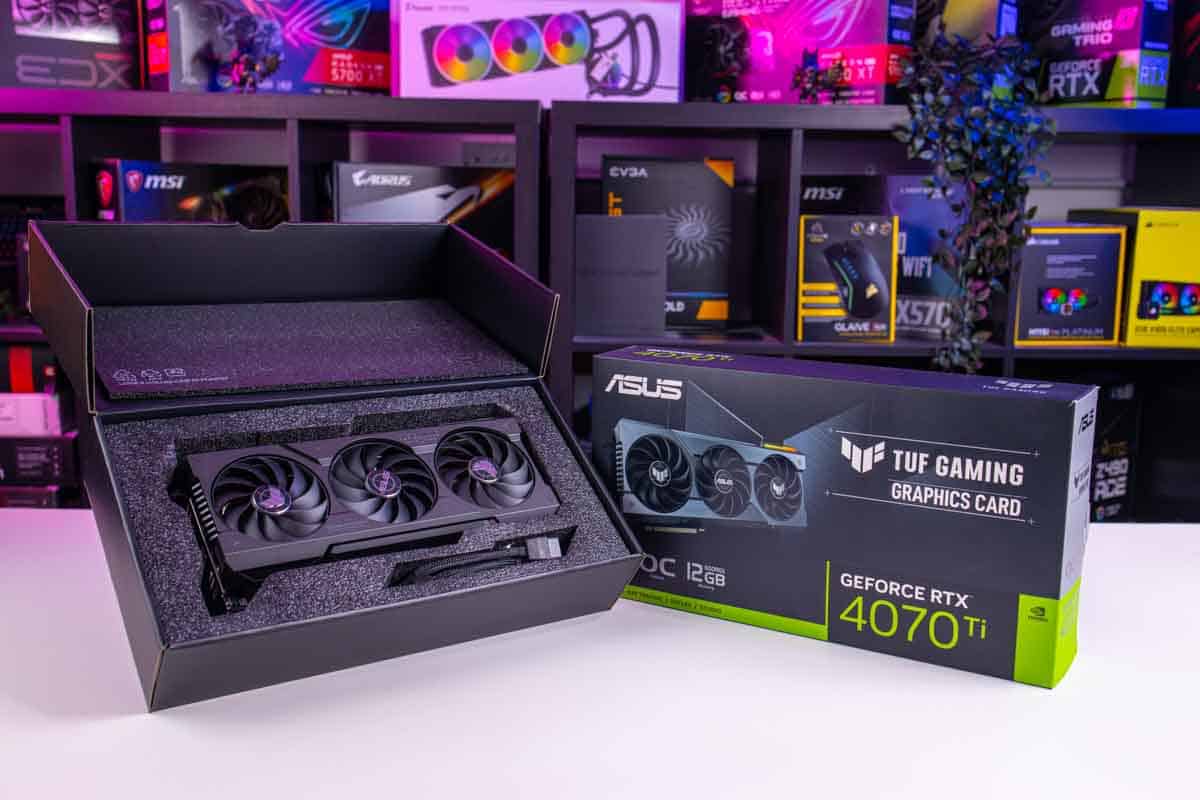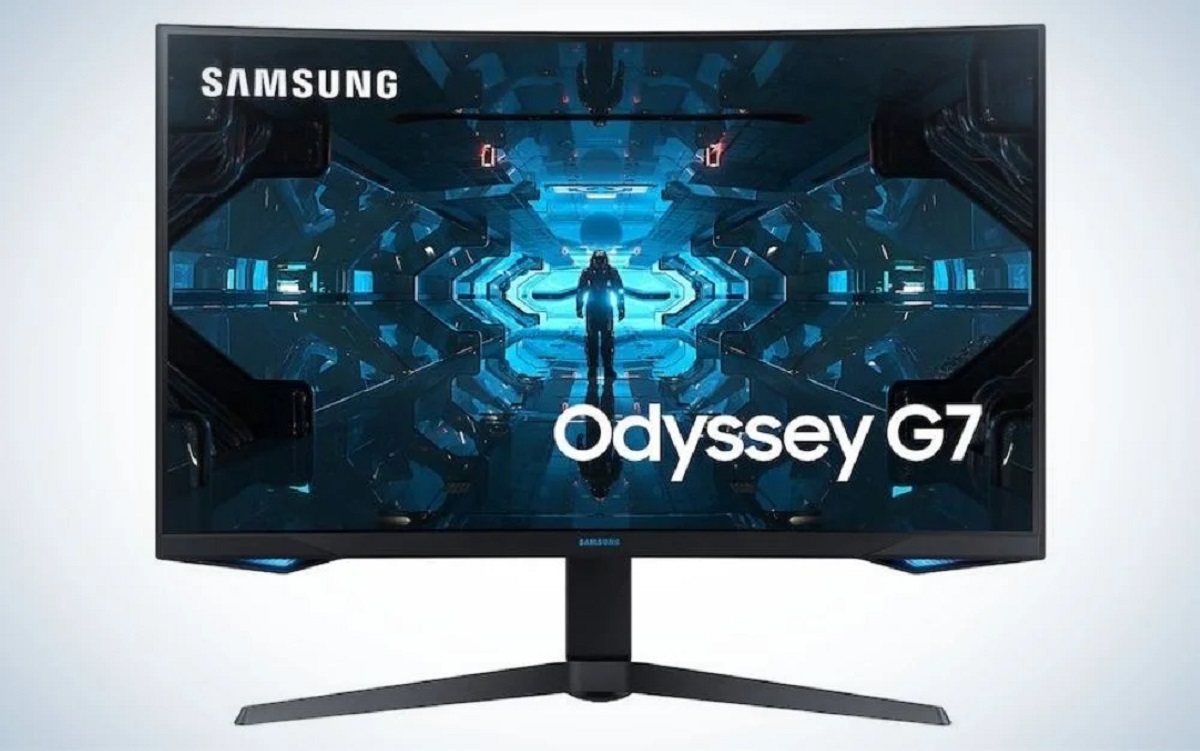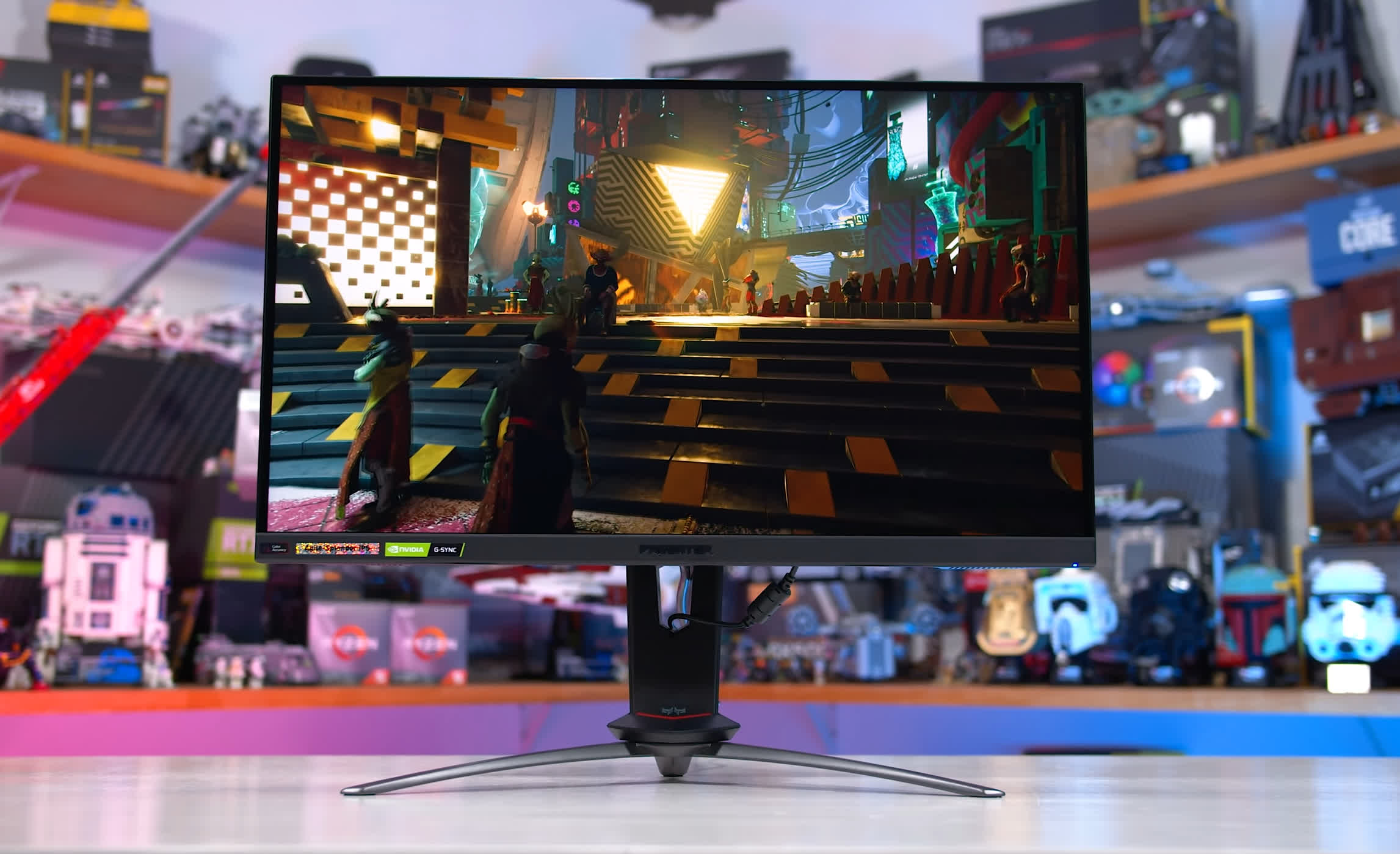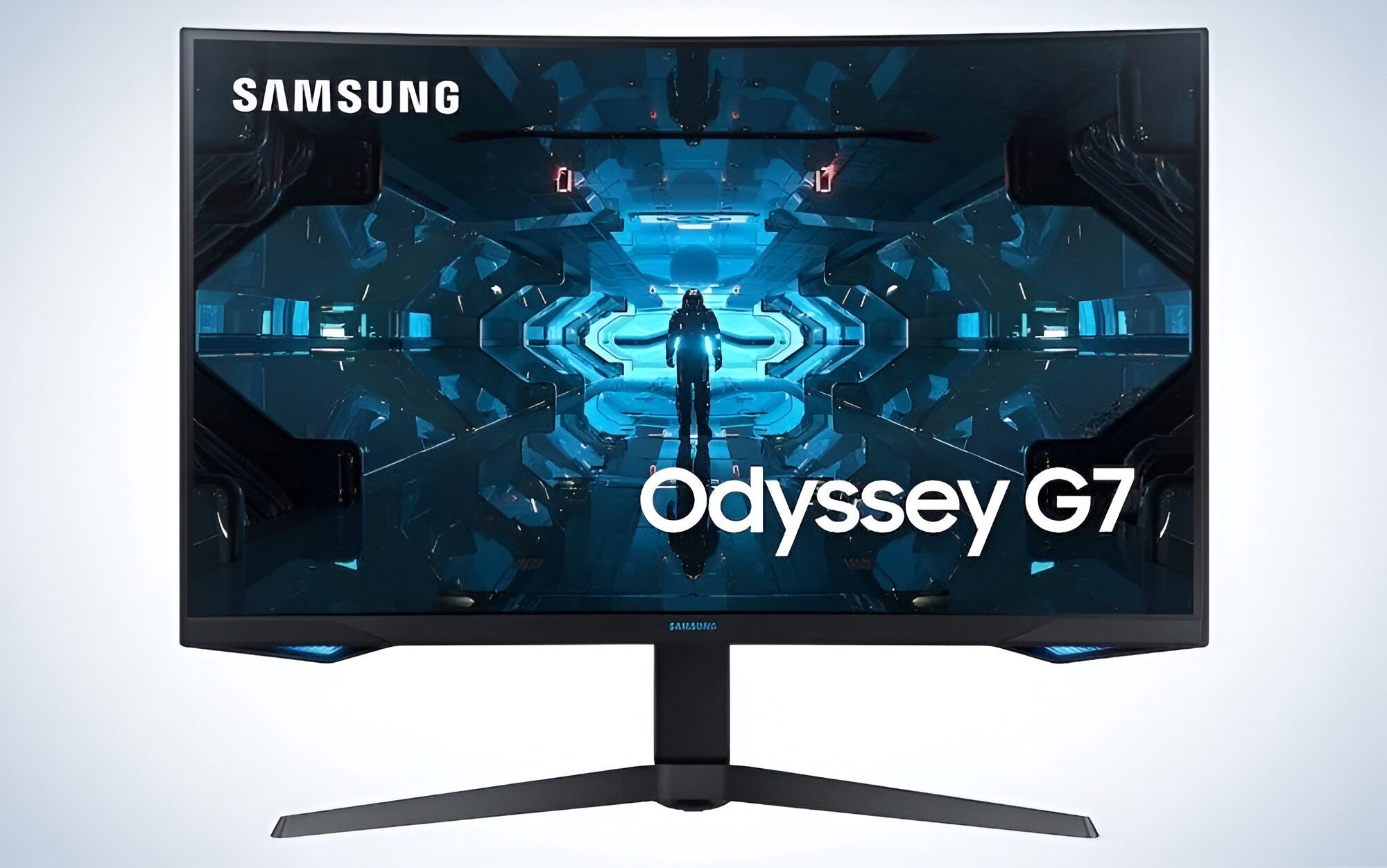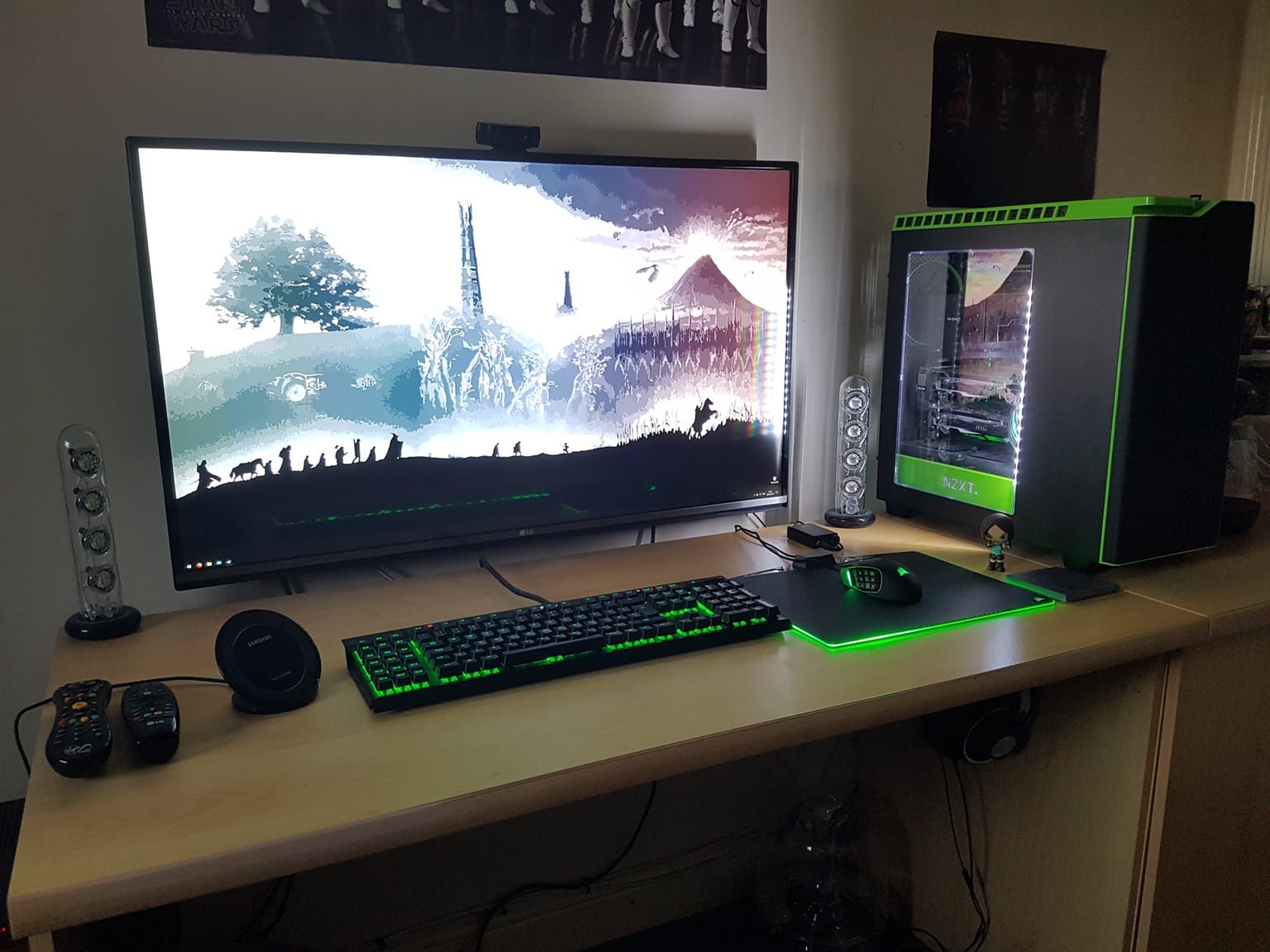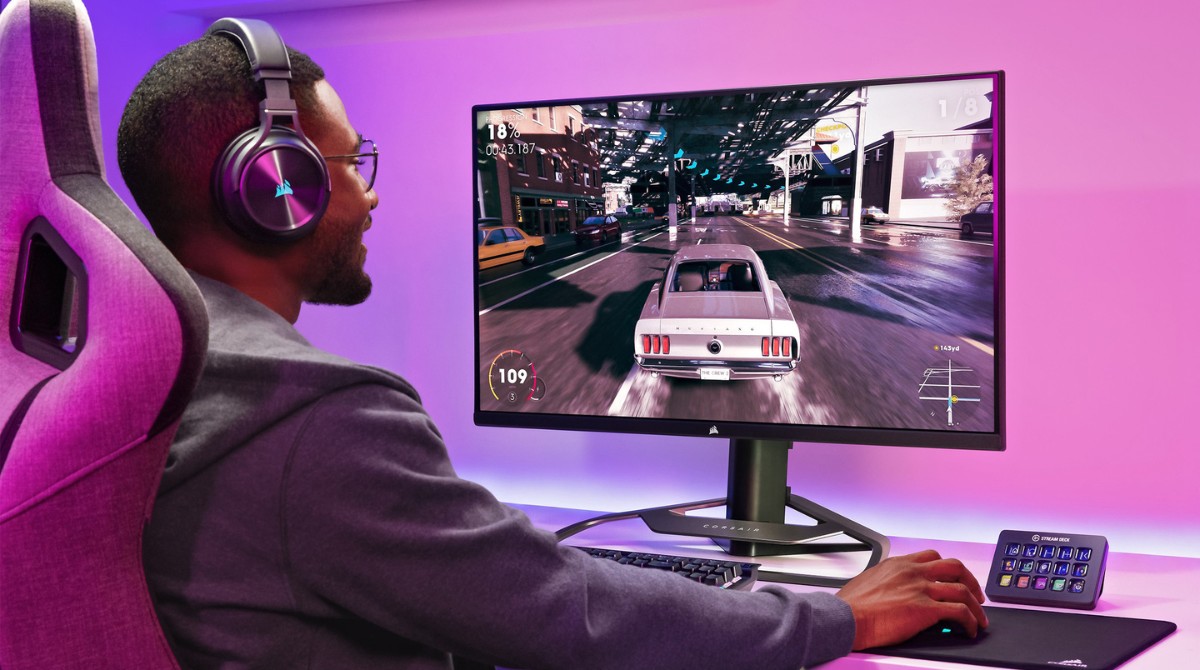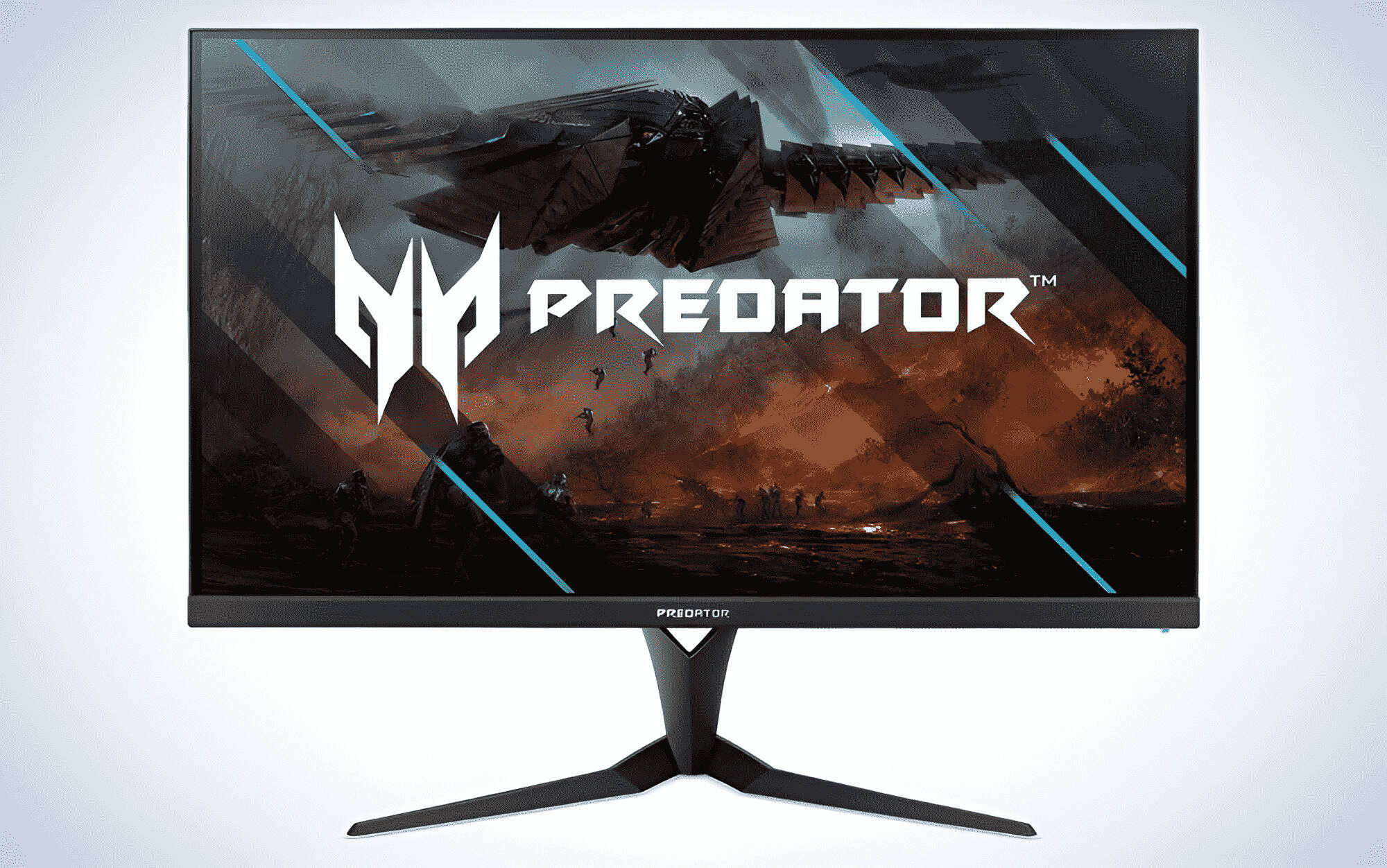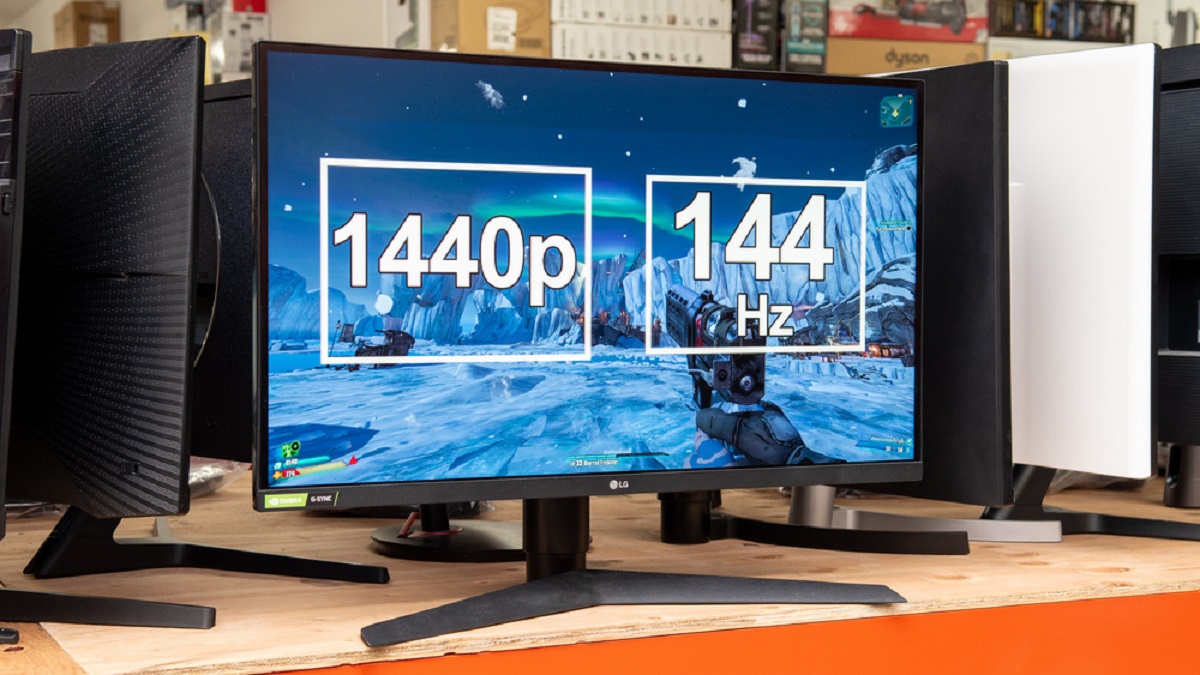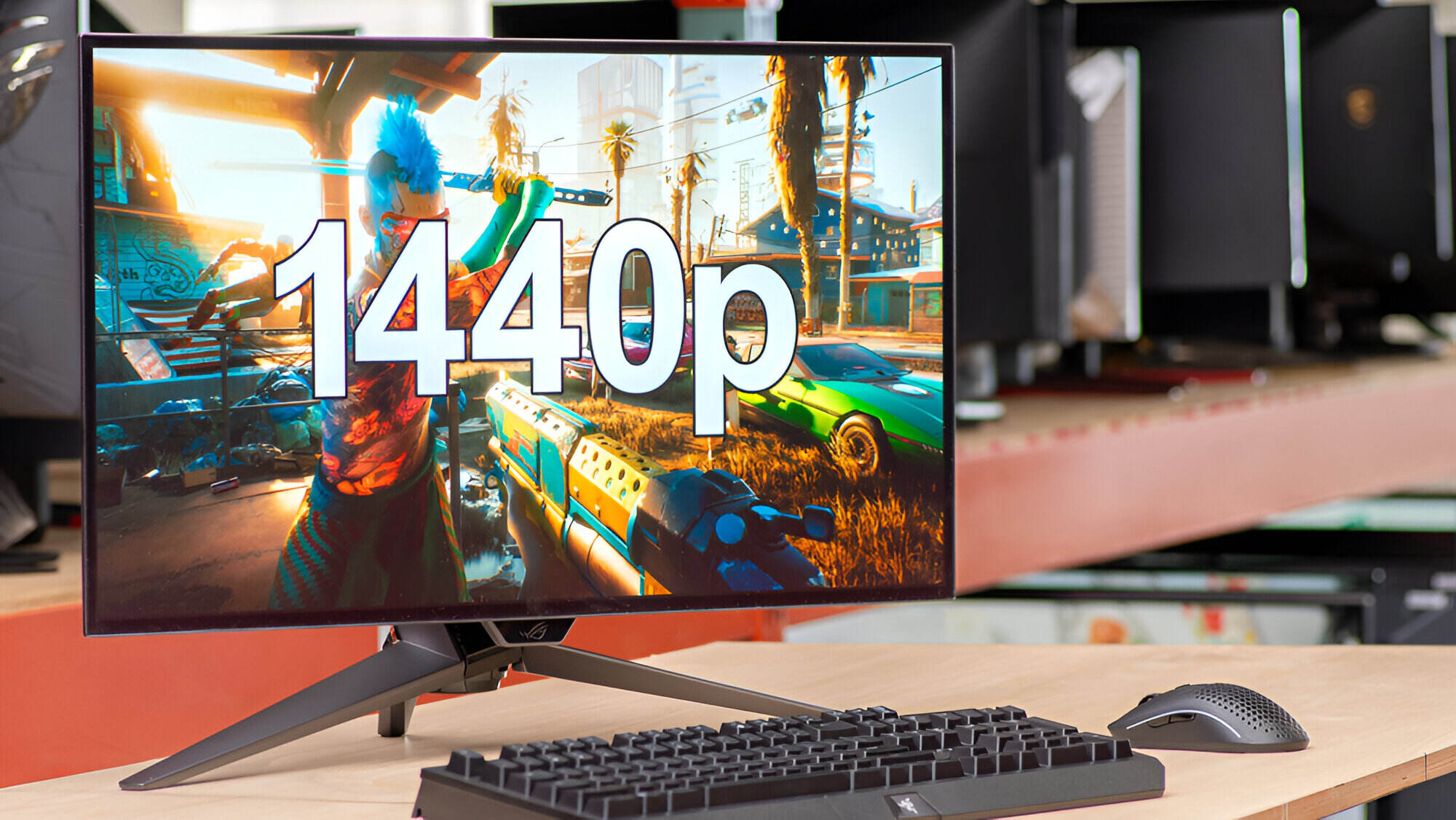Introduction
Welcome to the world of high-definition gaming! With the increasing popularity of gaming and the advancement of technology, gamers are now looking for the best possible experience. When it comes to visuals, nothing beats playing games at a resolution of 1440P with a refresh rate of 144Hz. The combination of crisp resolution and smooth frame rates provides stunningly immersive gameplay that is hard to match.
But before you dive into the world of 1440P 144Hz gaming, there are a few things you need to consider. One of the most important factors is the graphics card. The right graphics card can make all the difference in delivering the performance and visual fidelity required for this level of gaming experience. In this article, we will explore the graphics card requirements for 1440P 144Hz gaming, and discuss the recommended options to help you make an informed decision.
Playing games at 1440P refers to a resolution of 2560×1440 pixels, which offers a significant upgrade over the standard 1080P resolution. This increased pixel count provides a more detailed and sharper image, allowing you to see every small detail in your games. In addition to the resolution, the refresh rate of 144Hz ensures smooth gameplay by refreshing the image on the screen 144 times per second. This results in fluid motion without any noticeable stuttering or tearing, providing a seamless and responsive gaming experience.
Now, let’s dive into the factors you should consider when choosing a graphics card for your 1440P 144Hz gaming setup.
What is 1440P 144Hz?
Before we discuss the graphics card requirements for 1440P 144Hz gaming, it is important to understand what exactly this term refers to. 1440P, also known as Quad HD or QHD, is a screen resolution of 2560×1440 pixels. It offers a significant improvement over the standard 1080P resolution, providing sharper and more detailed visuals.
On the other hand, the refresh rate of 144Hz refers to the number of times the image on the screen is refreshed per second. A higher refresh rate results in smoother motion and reduces motion blur, making fast-paced games more enjoyable. In the case of 1440P 144Hz gaming, the combination of a higher resolution and a higher refresh rate delivers an optimal gaming experience with crisp visuals and seamless gameplay.
With 1440P resolution, you will be able to see more details in your games. Textures, character models, and environmental elements will appear much sharper and more immersive. Whether you’re exploring vast open worlds or engaging in intense multiplayer battles, the improved clarity of 1440P will enhance your gaming experience.
When it comes to the refresh rate of 144Hz, it has a direct impact on how smoothly your games appear on the screen. With each frame being displayed 144 times per second, you’ll notice a significant reduction in motion blur, making fast movements and quick reactions much more precise. This can greatly enhance your performance in competitive gaming, providing you with an edge over your opponents.
In summary, 1440P 144Hz gaming offers a visually stunning and highly responsive gaming experience. The combination of higher resolution and refresh rate brings games to life with sharper details and smoother motion. However, to achieve this level of gaming performance, you need the right graphics card that can handle the demands of rendering games at 1440P resolution and delivering high frame rates.
Factors to Consider
When it comes to choosing a graphics card for 1440P 144Hz gaming, there are several factors to consider to ensure you get the best performance and value for your money. Let’s take a look at some key factors:
- GPU Power: The graphics processing unit (GPU) is the heart of any graphics card. For smooth gameplay at 1440P resolution and a high refresh rate, you’ll need a powerful GPU. Look for models with ample VRAM and performance capabilities that can handle the demands of modern games.
- Compatibility: Ensure that the graphics card you choose is compatible with your system’s motherboard and power supply. Check the physical dimensions of the card to ensure it fits in your PC case and the power supply can provide enough wattage to support it.
- Connectivity: Consider the connectivity options provided by the graphics card. Look for cards with multiple DisplayPort or HDMI ports, as well as any additional ports you may require for your specific setup, such as DVI or USB-C.
- Budget: Set a budget for your graphics card purchase. Determine how much you are willing to spend and find a card that offers a balance between performance and cost. Remember to consider long-term value and future-proofing when making your decision.
- Heat Management: Gaming at 1440P 144Hz can put a significant load on your graphics card, leading to increased heat generation. Look for cards with efficient cooling solutions such as dual or triple fans or aftermarket cooling options to ensure optimal performance and longevity.
- Brand Preference: Some gamers have a brand preference when it comes to graphics cards, be it NVIDIA or AMD. Both brands offer excellent options, so consider your own preferences, as well as any specific features or software suites that each brand provides.
By considering these factors, you’ll be able to make a more informed decision when selecting a graphics card for your 1440P 144Hz gaming setup. Remember that finding the right graphics card is essential to ensure smooth and immersive gaming experiences without any compromise in visual fidelity or performance.
Minimum Requirements for 1440P 144Hz
When it comes to running games at 1440P resolution and a refresh rate of 144Hz, you’ll need a capable graphics card that meets the minimum requirements to ensure smooth and enjoyable gameplay. Here are the key specifications to consider:
- Graphics Card Memory (VRAM): A minimum of 6GB of VRAM is recommended for 1440P gaming. This ensures that the card has enough memory to handle the high-resolution textures and complex graphics of modern games.
- GPU Power: Look for a graphics card that has a minimum of 8GB of VRAM, combined with a powerful GPU. This will ensure smooth rendering and high frame rates for a seamless gaming experience at 1440P resolution and 144Hz refresh rate.
- Core Clock Speed: Higher core clock speeds are essential for delivering the necessary performance to run games at 1440P and high refresh rates. Look for graphics cards with a base clock speed of at least 1500MHz to provide smooth gameplay.
- Architecture: The GPU architecture also plays a vital role in determining the performance of the graphics card. Look for cards based on newer architectures, such as NVIDIA’s Turing or AMD’s RDNA, as they offer improved efficiency and performance.
- Power Supply: To support a powerful graphics card, you’ll need a robust power supply unit (PSU). Ensure that your PSU has enough wattage to provide sufficient power to the graphics card and other system components.
It is important to note that while these are the minimum requirements, they may vary depending on the specific games you play and their graphical demands. Some graphically demanding games may require more VRAM or a higher clock speed to run smoothly at 1440P 144Hz.
Keep in mind that meeting the minimum requirements will allow you to play games at 1440P resolution and 144Hz refresh rate, but you may need to adjust graphical settings to achieve the desired frame rates. To maximize performance and fully utilize the capabilities of a 1440P 144Hz monitor, it is recommended to aim for a graphics card that exceeds these minimum requirements.
Now that we have covered the minimum requirements for 1440P 144Hz gaming, let’s explore some specific graphics card recommendations for the best gaming experience.
Recommended Graphics Cards
Now that you understand the minimum requirements for 1440P 144Hz gaming, it’s time to explore some recommended graphics cards that can provide an exceptional gaming experience. These graphics cards not only meet the minimum requirements but also offer additional features and performance to push the limits of your gaming setup.
1. NVIDIA GeForce RTX 3080: The RTX 3080 is one of the most powerful graphics cards available, offering exceptional performance for 1440P 144Hz gaming. With 10GB of GDDR6X VRAM and the latest Ampere architecture, it delivers stunning visuals and smooth gameplay even in demanding titles.
2. AMD Radeon RX 6800 XT: The RX 6800 XT is AMD’s flagship graphics card, equipped with 16GB of GDDR6 VRAM and the RDNA 2 architecture. It delivers impressive performance in 1440P gaming, with features like ray tracing and AMD’s Infinity Cache for improved memory bandwidth.
3. NVIDIA GeForce RTX 3070: The RTX 3070 is a more affordable option while still offering excellent performance for 1440P gaming. With 8GB of GDDR6 VRAM and NVIDIA’s DLSS technology for improved frame rates, it can handle most modern games at high settings.
4. AMD Radeon RX 5700 XT: The RX 5700 XT is a great choice for gamers on a budget. With 8GB of GDDR6 VRAM and the RDNA architecture, it delivers solid performance in 1440P gaming, providing an enjoyable gaming experience without breaking the bank.
5. NVIDIA GeForce GTX 1660 Super: For those looking for a more budget-friendly option, the GTX 1660 Super is a solid choice. With 6GB of GDDR6 VRAM and excellent performance, it can handle most games at 1440P with good frame rates, making it a great option for casual and mid-tier gaming.
These are just a few of the recommended graphics cards for 1440P 144Hz gaming. When choosing a graphics card, consider your budget, specific gaming needs, and compatibility with your system. Keep in mind that graphics card availability may vary, so it’s worth checking the market and exploring different options to find the best graphics card that suits your requirements.
With a powerful graphics card from this list, you can take full advantage of your 1440P 144Hz monitor and experience smooth, immersive, and visually stunning gameplay.
NVIDIA vs AMD: Which is Better?
When it comes to choosing a graphics card for your 1440P 144Hz gaming setup, you may find yourself torn between two major players in the market: NVIDIA and AMD. Both manufacturers offer a range of graphics cards with various features and performance levels. Let’s explore the strengths of each brand to help you determine which one is better suited for your gaming needs.
NVIDIA: NVIDIA is renowned for its powerful and feature-rich graphics cards. Their flagship models, such as the GeForce RTX series, offer cutting-edge technologies like real-time ray tracing and DLSS (Deep Learning Super Sampling), which enhance in-game visuals and performance. NVIDIA’s software ecosystem, including GeForce Experience and NVIDIA Studio drivers, provides additional benefits such as automatic game optimization and support for content creation workflows.
Additionally, NVIDIA offers features like G-Sync, a technology that synchronizes the monitor’s refresh rate with the GPU’s frame rate, resulting in smoother and tear-free gaming experiences. NVIDIA’s drivers are well-known for their stability and frequent updates, ensuring compatibility and performance improvements over time.
AMD: AMD has made significant strides in the graphics card market with its Radeon series. The latest Radeon RX cards, based on the RDNA 2 architecture, offer competitive performance in both gaming and content creation. AMD’s graphics cards feature technologies such as Radeon Anti-Lag and Radeon Image Sharpening, which improve responsiveness and image quality.
One key advantage of AMD graphics cards is their competitive pricing. AMD often offers more affordable options compared to NVIDIA, making them an attractive choice for budget-conscious gamers. AMD also provides support for open-source technologies like FreeSync, which offers variable refresh rate support, similar to NVIDIA’s G-Sync, without the added cost of proprietary monitors.
Ultimately, the choice between NVIDIA and AMD comes down to personal preference, budget, and specific needs. NVIDIA’s graphics cards generally offer higher performance, advanced features like real-time ray tracing, and a well-established software ecosystem. AMD’s graphics cards provide competitive performance at a more affordable price point and support open-source technologies.
Consider your priorities, gaming requirements, and budget to determine which brand aligns better with your needs. It’s also beneficial to research specific models and compare benchmarks to find the best graphics card that offers the performance and features you’re looking for.
Regardless of which brand you choose, both NVIDIA and AMD offer options that can deliver an exceptional gaming experience at 1440P resolution and 144Hz refresh rate. Make sure to weigh the pros and cons and choose the one that suits your preferences and requirements.
Conclusion
In conclusion, 1440P 144Hz gaming offers a visually stunning and immersive gaming experience. To achieve optimal performance at this resolution and refresh rate, it is essential to choose the right graphics card. By considering factors such as GPU power, compatibility, connectivity, budget, heat management, and brand preference, you can make an informed decision.
The minimum requirements for 1440P 144Hz gaming include a graphics card with at least 6GB of VRAM, a powerful GPU, and a high core clock speed. However, it is recommended to aim for higher specifications to fully maximize your gaming experience.
Several graphics cards are highly recommended for 1440P 144Hz gaming. The NVIDIA GeForce RTX 3080 and AMD Radeon RX 6800 XT are powerful options that deliver exceptional performance. The NVIDIA GeForce RTX 3070, AMD Radeon RX 5700 XT, and NVIDIA GeForce GTX 1660 Super offer more affordable alternatives without compromising quality.
When it comes to choosing between NVIDIA and AMD, it ultimately depends on personal preference and specific needs. NVIDIA offers cutting-edge technologies, like real-time ray tracing and DLSS, as well as a robust software ecosystem. AMD provides competitive performance at a more affordable price, along with support for open-source technologies and features tailored for gaming and content creation.
Remember to consider your budget, gaming requirements, and compatibility with your system when making a decision. Research and compare specific models’ benchmarks to find the best graphics card that aligns with your needs.
With the right graphics card for your 1440P 144Hz gaming setup, you can enjoy smooth gameplay, stunning visuals, and an immersive gaming experience that will elevate your enjoyment of your favorite games.







